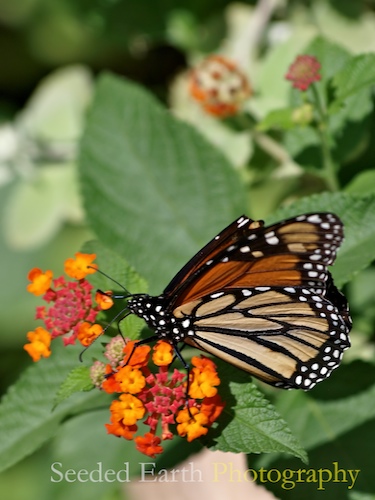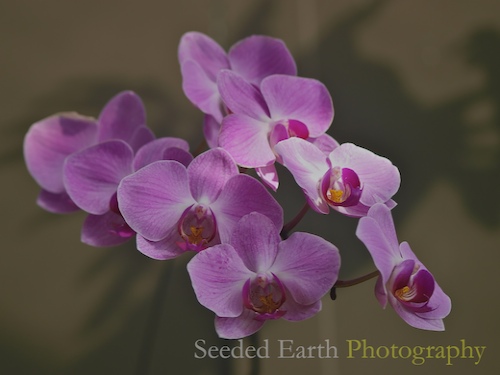When we were traveling in the Southwest last fall, we visited the Desert Botanical Garden in Phoenix. The Maricopa Monarca Butterfly Exhibit was open and we spent some time wandering in the Marshall Butterfly Pavilion, getting a close-up view of hundreds of Monarchs. This Monarch is sitting on a Lantana flowering plant.
I never gave much thought to the migration of Monarchs until I stumbled upon the fact that only one in four generations of Monarchs actually migrate. Three out of every four generations of Monarchs live only 10 weeks or so. The fourth generation lives up to 8 months. Here’s the story:
A typical Monarch runs through its life cycle in about 10 weeks. Four days inside the egg, two weeks as a caterpillar (larvae) while it lives on and munches through its host milkweed plant, then ten days inside its chrysalis. Finally the Monarch bursts forth in all its glory, and lives as an adult butterfly for maybe 2 to 6 weeks. At least this is the life style of 3 out of 4 generations of Monarchs. The wintering or migrating generation (the fourth generation) flies south and lives through the winter. The monthly time-line is a bit like this:
February/March – the Monarchs that hibernated in the southern regions of California and in Mexico come out of hibernation, find a mate, and return to the North where they lay their eggs. When they die, they have lived a long life for a Monarch – perhaps 4-5 months as adults while they hibernated during the winter.
March/April – The first generation of this year’s Monarchs are born and proceed with business as usual (egg, caterpillar, chrysalis, adult)
May/June – The second generation does as the first generation did.
July/August – The third generation does as the second and third generations did.
September/October – This is the lucky generation if, as a butterfly, you wish to be a traveler and live a long (relatively) life. The fourth generation goes through the familiar cycle, but the adults do not die. They migrate to the South, hibernate in the warm climes of Southern California or Mexico, and then they lay their eggs the following February/March.
And then the process repeats itself, over and over.
Nature is very curious and very cool.











